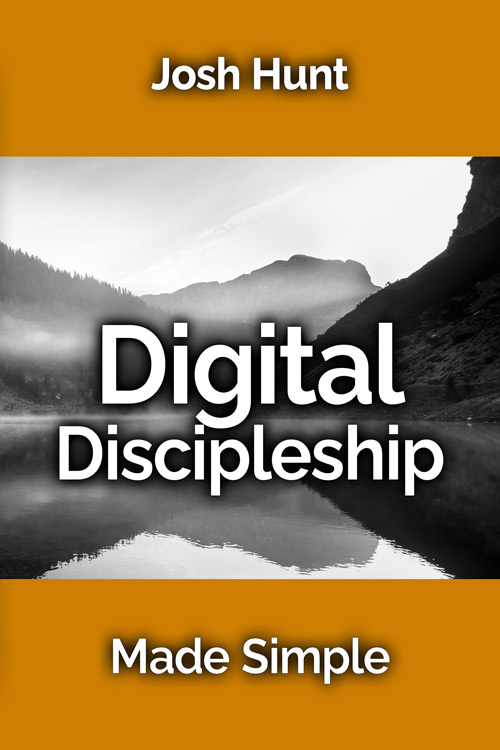 When my parents went to the Philippines to serve as missionaries back in the 1950s, they had to travel by boat, and the trip took several weeks. Communication
with family and supporters back home was slow and limited. They served stateside for a time before returning to the Philippines in the 1990s. By then, things had improved somewhat, but communication was still far from instant. We wrote to them using handwritten letters on thin, one-page, blue airmail sheets designed for international postage. When my sister got married, it was too expensive for them to fly home for the wedding. Instead, they were able to watch it later—on a VHS tape mailed weeks
after the event.
When my parents went to the Philippines to serve as missionaries back in the 1950s, they had to travel by boat, and the trip took several weeks. Communication
with family and supporters back home was slow and limited. They served stateside for a time before returning to the Philippines in the 1990s. By then, things had improved somewhat, but communication was still far from instant. We wrote to them using handwritten letters on thin, one-page, blue airmail sheets designed for international postage. When my sister got married, it was too expensive for them to fly home for the wedding. Instead, they were able to watch it later—on a VHS tape mailed weeks
after the event.
My, how things have changed. Today, a missionary serving overseas can hop on a video call with their family back home in real time. They can share prayer requests via email or social media in a matter of seconds. Supporters can watch updates on YouTube or Instagram and even contribute financially through online giving platforms with just a few clicks. Technology has revolutionized the way missions work is done, making it faster, more efficient, and more connected than ever
before.
In this chapter, we’ll explore some of the many ways missions have gone digital. To start, here are a few highlights by way of preview:
1. Real-Time Communication
Missionaries no longer have to wait weeks for letters to travel across oceans. Tools like WhatsApp, FaceTime, and Zoom allow them to connect instantly with their families, supporters, and home churches. This not only provides emotional support but also enables more dynamic and immediate prayer
partnerships.
2. Online Training and Discipleship
Missionaries can now access and deliver training materials through platforms like Zoom, Google Meet, or Moodle. Bible colleges and seminaries offer online courses, equipping local leaders in remote areas who might not have the opportunity to attend in person.
3. Social Media Evangelism
Platforms like Facebook, Instagram, TikTok, and YouTube provide unprecedented opportunities for sharing the gospel. Ministries like
Global Media Outreach use these platforms to engage seekers, answer spiritual questions, and lead people to faith through digital interactions.
4. Bible Translation and Distribution
Technology has dramatically accelerated Bible translation projects. Tools like Paratext and software from organizations like Wycliffe allow translators to collaborate in real time. Digital platforms, such as YouVersion and the Bible App, make Scripture available in hundreds of languages with a few taps
on a smartphone.
5. Digital Resources for Evangelism
Apps like the Jesus Film, Bible.is, and GodTools provide evangelistic resources that missionaries can use to share the gospel in a culturally relevant and accessible way. These tools often include audio, video, and visual resources in multiple languages.
6. Crowdfunding and Online Support
Missionaries can raise funds through platforms like GoFundMe, GiveSendGo, and Tithe.ly. This enables them to quickly and
efficiently communicate financial needs to their supporters and build a sustainable base for their ministry.
7. Virtual Missions Trips
Churches and organizations now offer virtual mission experiences, allowing participants to connect with missionaries, pray for specific regions, and learn about global needs—all without leaving home. This has made missions more accessible to people who might not be able to travel.
8. Technology-Assisted Language Learning
Missionaries
often need to learn new languages to be effective in their work. Apps like Duolingo, Rosetta Stone, and Biblingo have made language learning more efficient and interactive, allowing missionaries to immerse themselves in the language and culture of the people they serve.
9. Satellite and Internet Broadcasts
Christian radio and television programs, along with online streaming, are bringing the gospel to remote areas where missionaries can’t always go. Stations like TWR (Trans World
Radio) and FEBC (Far East Broadcasting Company) reach millions with gospel-centered content.
10. Data-Driven Missions Strategies
Organizations are using technology to map unreached people groups, track spiritual engagement, and make data-informed decisions about where to focus their efforts. Platforms like Joshua Project and people group mapping tools are invaluable for strategic planning.
These are just a few of the ways technology is revolutionizing missions. In the pages
ahead, we’ll dive deeper into real stories of how missionaries and ministries are leveraging these tools to bring the gospel to the ends of the earth. The methods may have changed, but the mission remains the same: making disciples of all nations. Let’s explore how technology is helping us fulfill the Great Commission in new and exciting ways.